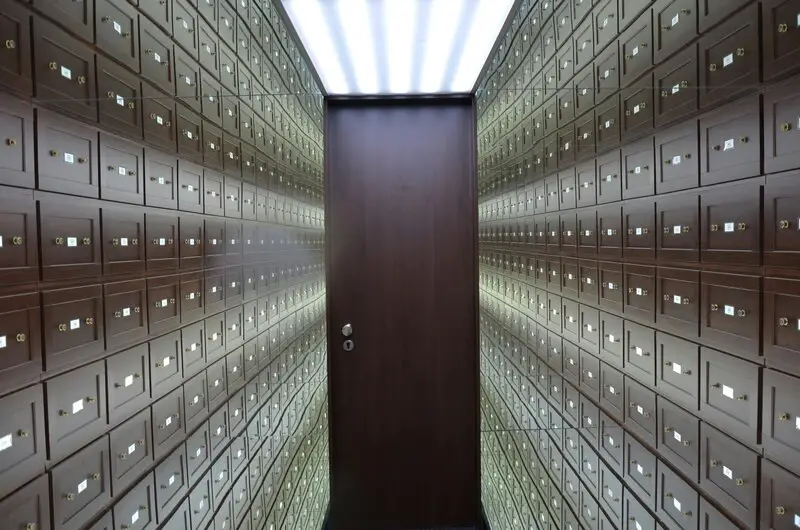Gold is often seen as the ultimate safe haven asset. But buying gold is only half the equation—how you store it is just as important. Poor storage can expose you to theft, damage, or even loss during crises. This makes it crucial to choose a gold storage method that balances security, accessibility, and cost based on your individual needs.
In this guide, we'll explore the three main gold storage options: at home, in a bank safety deposit box, and in a professional vault—highlighting the pros, cons, costs, and key considerations of each.
Why Storage Matters
Gold may be timeless, but it's not invincible. Physical gold is vulnerable to:
Theft
Especially if stored carelessly at home
Fire or Water Damage
Environmental hazards can damage gold
Misplacement
Losing track of storage locations
Legal Complications
Issues during probate or emergencies
Option 1: Storing Gold at Home
Pros:
Immediate Access
You can get your gold instantly in emergencies.
No Storage Fees
Once you've bought a safe, there are no ongoing costs.
Complete Privacy
No third party involved in holding your assets.
Cons:
Security Risk
Home storage is most vulnerable to theft.
Insurance Limitations
Standard home insurance may not cover high-value gold unless specifically added.
Full Responsibility
You're entirely responsible for safety, documentation, and estate planning.
What You'll Need:
- A high-quality safe, preferably fireproof and waterproof
- The safe should be bolted down or hidden
- Consider installing a home security system
- Store in a discreet location and limit who knows about it
Tips:
- Insure your gold separately with a specialist provider
- Keep documentation of all purchases and photos for identification
- Avoid storing all gold in one place—dividing into multiple safes may increase security
Option 2: Bank Safety Deposit Boxes
Many investors choose traditional banks to store gold in safety deposit boxes. This offers enhanced physical security and discretion.
Pros:
High Security
Banks typically have advanced surveillance and secure vault systems.
Out of Sight
Keeping gold off-premises reduces personal risk.
Respected Option
Still considered a trustworthy method of storage, especially in the UK and EU.
Cons:
Limited Access
Only during bank hours; not ideal during emergencies.
Fees
Annual rental costs can add up—typically between £100 and £300 per year depending on box size and location.
Not Always Insured
The contents are usually not automatically insured—separate cover is needed.
Reduced Availability
Many UK banks have stopped offering new deposit boxes.
Tips:
- Confirm availability and terms before moving gold into a bank
- Add a trusted family member or solicitor as an authorised user in case you're incapacitated
- Get specialised insurance through firms like Loomis or Brinks if the bank doesn't offer coverage
Option 3: Professional Vault Storage (Third-Party Vaults)
Vault storage services are designed specifically for storing precious metals. These are provided by specialist firms and sometimes directly by bullion dealers.
Types of Vaults:
Allocated Storage
Your gold is stored separately and specifically identified as yours.
Unallocated Storage
Your gold is pooled with others but you own a portion of the bulk holdings—usually cheaper, but riskier.
Pros:
Ultra-Secure Facilities
Often used by central banks and institutional investors.
Insurance Included
Most vaults offer full insurance for the value of your holdings.
No Personal Security Measures
Gold is professionally managed and audited.
Ideal for High Net Worth
Especially suitable for large holdings or long-term storage.
Cons:
Annual Fees
Typically 0.1%–0.5% of the gold's value.
No Immediate Access
Gold must be requested or shipped.
Trust Factor
You need to trust the vault provider's transparency and solvency.
Well-Known Vault Providers:
Brinks
Loomis
Malca-Amit
The Royal Mint
How to Choose the Right Option
Here's a simple breakdown based on key decision factors:
| Factor | Home Safe | Bank Box | Vault Storage |
|---|---|---|---|
| Security | Moderate (self-managed) | High (bank-managed) | Very High (professionally managed) |
| Access | Immediate | Limited (bank hours only) | Delayed (via request) |
| Cost | One-time (safe purchase) | Moderate annual fees | Percentage-based annual fee |
| Insurance | Often separate/limited | Separate | Usually included |
| Best For | Small amounts, privacy | Moderate holdings, discreet storage | Large holdings, long-term investment |
Tips for Any Storage Method
Keep Documentation
Maintain records of every purchase (invoice, certificate, serial numbers).
Insure Your Gold
Always ensure your investment is protected, especially if stored outside your home.
Let Someone You Trust Know
In case of death or incapacity, someone should be able to access your gold legally and safely.
Review Periodically
Storage needs can change—review your setup every year or after major life events.
Final Thoughts
There's no one-size-fits-all answer to gold storage. Each method—home, bank, or vault—offers distinct benefits and risks. Your choice should reflect the size of your holdings, your security preferences, and how quickly you may need access.
Hybrid Approach Recommendation
For most investors, a hybrid approach works best—keeping a small portion at home for quick access, and storing larger amounts in professional vaults or secure bank boxes.




